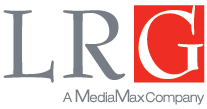Ever since Facebook announced it was changing its algorithm, better known as EdgeRank, to make it more difficult for brands to achieve organic reach, paid social has stepped onto the scene in a big way. Brands first complained about the shift towards social advertising and eventually embraced it as a necessary evil.
As we near the end of 2015, brands are finally seeing paid social for what it is: a one-of-a-kind opportunity. With more brands competing for an ever-shortening attention span, paid social is key for brands looking to stand out from the rest of the noise out there.
However, learning how paid social works on each platform can be daunting. Trying to figure out how to divide your spend is an impossible task without knowing the benefits each one provides. Here is a quick breakdown of advertising on Facebook, Twitter and LinkedIn along with the benefits each provides.
How it works: You can get pretty specific business targeting, such as company size, titles, industries and geography. Sponsored Updates and display are most common for advertising on LinkedIn. For a much larger fee, you can get LinkedIn’s version of white-label advertising, but for this post, we’ll focus on the basic package.
Pros: LinkedIn gives B2B companies the most qualified audience out of any social network. It’s no longer just a job search site; users are now looking for all sorts of partnership opportunities and it serves almost every industry in one way or another. No other social network lets you target an ad to the specific position of your potential buyer in the exact industry you’re selling to.
Cons: As a result of LinkedIn’s superior targeting capabilities, advertising is a bit pricey compared to Facebook and Twitter. Prepare to spend at least $8 per click, maybe even more, in order to reach your audience. In addition, LinkedIn’s analytics are limited compared to the rest of the industry.
Ideal use case: Brands that have case studies or white papers can use advertising to collect dozens of leads, with a big enough budget and the right targeting. Simply set up a tracking code and you can measure the direct correlation between your advertising and conversions.
How it works: Twitter is a cheaper lead generation tool, but has different strategic advantages. The two that make the biggest difference for B2B are the ads that optimize for leads and generate website click-throughs. Twitter actually collects leads without users having to leave the site, making a more seamless user experience. You can also target based on topical interests or accounts that users happen to follow.
Pros: If your industry is active on Twitter, advertising is a great way to find new customers and educate them about your brand. It also has the most versatile advertising; it gets so precise, you can even find people who are currently watching a specific TV show in real-time.
Cons: It can be difficult to qualify results due to the wide diversity of activity on the platform. While having the right targeting in-place can alleviate some of the problem, it is definitely a consideration companies should keep in mind. Twitter also charges you for every interaction in a sponsored tweet, whereas LinkedIn doesn’t bill for social interactions.
Ideal use case: Companies that publish a regular newsletter or have a new video that is relevant to a hot topic, such as the Internet of Things, might want to create a campaign that leads people to your content to drive thought leadership on the topic. Or, in the case of the newsletter, people interested in the Internet of Things may sign up because they might find your content to be of value to them.
How it works: Like it or not, Facebook has the most data on your digital footprint, period. For marketers, this is great news. You can target at a granular level, covering even the most minute details such as previous purchases or even if users have visited your website. Facebook is slowly making ground on LinkedIn by offering specific B2B targeting that allows you to filter by company size and industry as well.
Pros: Facebook gives you the most bang for your buck, hands down. It has the lowest cost per click, averaging well below a dollar and sometimes even as little as pennies. The News Feed provides businesses with the best social real estate available and is ideal for companies trying to sell something that requires visuals – such as the manufacturing industry.
Cons: Facebook is the weakest channel for B2B companies to advertise on, partially because of its focus on optimizing B2C audiences. As a result, many B2B customers aren’t as active on Facebook as they are on Twitter and LinkedIn. Another problem is that although Facebook advertising is cheap, it requires several campaigns to be effective. For instance, having a fan base or getting any sort of engagement on content requires advertising dollars as well. Focusing on app installs or leads exclusively doesn’t provide any other benefit to the page.
Ideal use case: For brands looking to increase web traffic, Facebook is a great tool to do so. First, the format that pushes out content makes it so that a good picture and headline can generate plenty of referral traffic to a blog post. Second, if you choose to go with the retargeting route, the ad format is a great tool for getting users to come back. This is especially useful for brands that want a higher percentage of their web traffic downloading content.
Each platform has its own set of advantages and disadvantages. Ultimately, the best way to tell where to allocate advertising dollars over the long-term is to test each platform and see what produces the best results. Paid social will continue to deliver higher ROI for B2B advertisers as more and more of this audience joins the migration to social media.


